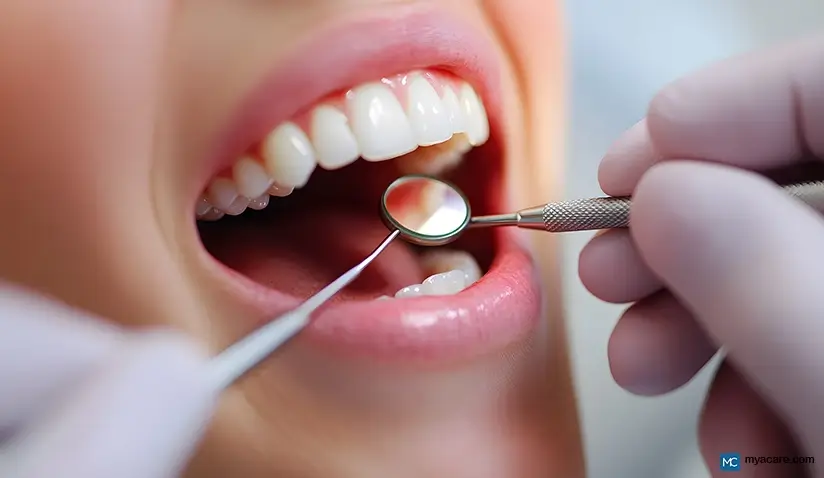Depression as a Disease of Modern-Day Living

Medically Reviewed and Updated by Dr. Rae Osborn, Ph.D. - October 04, 2023
In the last several thousand years, humans developed better-structured civilizations that gave rise to vast improvements in building, agriculture, and convenience. With the exception of a few tribal cultures, societies began to change the environments in which they lived, giving rise to the metropolitan environments that we now occupy.
Research is beginning to piece together the effects that the modern environment has on our biology[1]. Some of these effects may serve to perpetuate states of disease in susceptible individuals. Depression may be considered a prime candidate.
As it is not always easy to tell what affects our health and well-being, remaining informed of environmental factors can be useful. Depression and its incidence in the context of modern-day living is discussed below.
A Brief Look at Depression
Depression may present with chronic sadness and/or irritability, but is ultimately associated with a deficit of feeling, a loss of interest, and physical symptoms such as fatigue and sleep disturbance.[2]
The cognitive and neurological changes observed in depressive disorders impact the daily functioning of affected individuals. Depression may also increase the risk of disease due to its relationship with immune function.[3]
Other symptoms of depression can include[4]:
- Loss of pleasure
- Feelings of guilt
- Lack of self-worth
- Changes in appetite and weight
- Suicidal ideation
Pathology
The pathology of depression has yet to be fully established. Common neurobiological factors include disruptions in serotonin signaling of the central nervous system and sometimes of other tissues, such as blood platelets. This is observed for all types of depression and is one of the reasons that serotonin reuptake inhibitors are often prescribed.
Norepinephrine and dopamine levels may be altered in states of severe depression, affecting attention, energy levels, motivation and perceived reward. Unbalanced glutamate, GABA and brain-derived neurotrophic factor levels are also implicated in moderating cognitive ability in depressed people.
Damage to areas of the brain that regulate emotion can contribute towards chronic depression and anxiety as well. Thus neurological diseases, vascular lesions, brain ischemia and traumatic brain injury are known to substantially increase the risk for depression.
Sickness syndrome is another major risk factor in which serotonin alterations occur in the context of chronic infection. This can eventually give rise to faulty serotonin signaling in the nervous system and induce depression. This is particularly prominent in neurological infections.
Prevalence
In the 90s, depression rates nearly doubled, moving from 3.6% to just over 7%, where it currently remains. However, due to misconceptions (largely perpetuated by societal attitudes discussed below) the prevalence of depression is actually thought to be much higher in the population. It is estimated that as many as 60% of cases are unreported and left untreated.
Women are at a 1.5-3-fold higher risk for depression than men. Furthermore, the incidence of depression is three times higher in those aged 18 to 29 years, than in those aged 60 and older.
The elderly are known to have better emotional well-being than they did in their youth. Yet the incidence of depression is likely also commonly misdiagnosed in elderly individuals. Symptoms are experienced differently due to lifelong stress exposure and lived experience.[5]
When Depression Was First Documented Historically: A Big Clue
The first cases of depression were documented in early settlements in which humans began to participate in agriculture. It is not that agriculture is a cause of depression, but it is that with agriculture, many lifestyle factors changed simultaneously and seemed to cause an overall decline in health.[6] As humans were originally hunter-gatherers who lived while roaming a variety of terrains, the change induced by staying in one place to tend vegetables and livestock is substantial.
Another aspect of this change would be an ever-growing focus on wealth accumulation. Systems of commerce provide a platform for inequality as well as for both inadequate and excessive consumption. Alcohol, tobacco and other addictive substances that detract from health were likely to have only emerged after the invention of agriculture. When taken to the extreme, all of these factors may predispose individuals to depression.
Social Isolation as a Main Feature of Modern-Day Depression
Social isolation and depression tend to go hand-in-hand and enhance one another. Depressing thoughts can easily arise from alienation, and feeling depressed is strongly linked to retraction from social settings.
Modern-day societal perceptions, consumerism, technological advancements and media have contributed towards a reduced degree of social connection, which can increase the risk of social isolation.
The Negative Impact of Social Isolation on Health
Social isolation has a pronounced effect on mental health[7]. The main symptoms induced by social isolation include[8]:
- Anxiety
- Depression
- Poor sleep quality
- Physical inactivity
Prolonged social isolation can increase the risk of chronic fatigue, poor immune function, and mental health disorders, especially anxiety disorders. Chronic social isolation may also cause social anxiety disorder in susceptible people and can make the disorder worse in those who already have it[9].
In addition to mental health problems, social isolation can increase the risk of all-cause mortality[10]. Chronic anxiety and stress can lead to metabolic problems, low-grade inflammation, and heart problems, which can elevate the risk of diabetes, heart disease, muscle wasting, and/or weight gain.
A healthy social life improves and maintains behavioral, psychological, and physical health[11]. Positive social interactions can promote healthy behaviors, such as eating a balanced diet and exercising. A lack of social interaction can lead to unhealthy behaviors, which can also increase the risk of chronic illness. Scientific studies also link social support to better stress resilience[12], which is much lower in socially isolated people.
Social Isolation at an Early Age Affects Neural Development
Children and adolescents are particularly susceptible to the effects of social isolation, which may increase with stressful life events, social exclusion[13], bullying at school and a lack of social support from family, friends or caregivers.
Childhood social isolation is also linked to an increased risk of developing a substance abuse disorder and mental health issues later on in life, in tandem with chronic anxiety. Healthy socializing helps to regulate neurotransmitters that influence behavior, such as dopamine. Faulty noradrenergic signaling is linked to childhood isolation, persistent anxiety, and alcoholism[14].
Following on from this trend in children, rats undergoing social isolation proved that it affects brain areas that regulate fear, anxiety and aggression. Neuropeptides get released during social isolation that affect these areas of the brain. Chronic isolation may result in unbalanced levels of these peptides, leading to persistent fear and heightened aggression[15].
It is natural for children to learn from stressful situations through fear-based conditioning. However, the fear generally abates as the child becomes an adult. This is referred to as fear inhibition. Childhood isolation has been shown to increase a lack of fear inhibition, which may lead to chronic anxiety later on in life.
Is There a Difference between Social Isolation and Perceived Loneliness?
Some studies emphasize how the detrimental effects of social isolation are increased in people who subjectively perceive themselves as being lonely or isolated[16] [17]. This is true whether the people were objectively isolated or not. In other words, people that think they are alone will suffer the effects of social isolation even when in company and those that do not think they are alone may not suffer any effects from actual isolation.
This raises the question: is social isolation a purely subjective phenomenon? The realistic answer is no. Objective social isolation has been proven to negatively affect health and increase mortality risk[18]. Subjective isolation can increase or induce the negative effects of objective isolation. The tendency for perceived isolation is heightened in depressed, stressed or anxious individuals and those with mental health conditions. One’s approach to socializing, to others and to themselves, all appears to influence the impact of social isolation in a way unique to the individual.
Lockdown Measures and Social Isolation Risk
COVID-19-induced social isolation proved to increase depression scores by 12.8% and anxiety by 12.3% over a period of 6 weeks in 7127 UK citizens above the age of 50[19]. The increased incidence rates seen for women were double that of men. Women were more susceptible to depression, while men were more susceptible to anxiety. Oddly, a small percentage of participants reported an improvement of symptoms in response to the lockdown, most of which were for anxiety (4.9%) and not depression (1.5%).
Rates of loneliness increased during the pandemic from 2-20%, in spite of having the option to communicate remotely with friends and family.
In men, digital social activity appears to promote more anxiety related to social isolation instead of providing relief. This suggests that digital social interactions are not equivalent to physical social interactions and that physical contact is important for avoiding depressive symptoms induced by social isolation.
The fraction of those that experienced symptom relief highlights how perception plays a large role in moderating the negative effects of social isolation. Perceived social connectedness and connection are invaluable for well-being.[20].
The Benefits of Socializing May Be Quality and Dose-Dependent
There is a limited body of evidence that suggests that a person with less social roles participates in less social activity and is at a higher risk of disease. This proved to be true of cardiovascular disease, with disease risk in relation to social activity being more pertinent to men. [21]
It also suggests that social contact has dose-dependent health effects, with too little increasing the risk of disease and social isolation. Too much social contact may have a negative impact on some individuals in terms of increasing perceived isolation; however, it is generally not associated with adverse health effects. This does not apply to unhealthy relationships, which are not conducive to well-being.
The quality of social relationships is as important as the degree of social contact. Abusive or highly strung relationships are associated with similar effects of social isolation, increasing disease risk[22]. This is well-documented in long-lasting marriages that have taken chronic strain due to unresolved, underlying tensions, constant arguments and stress.[23]
Relationship strain of this kind is linked with increased body inflammation, prolonged infection, and delayed wound healing. [24] If left unresolved, it can get worse over time, increasing the risk of disease and subsequent mortality.
Peaceful conflict resolution is generally seen as a sign of a healthy relationship, as it serves to diminish perpetual emotional stress. Conflict resolution is not equitable to conflict avoidance, which often facilitates relationship strain and may promote unhealthy coping mechanisms, such as alcoholism.
Mental Health Platforms for Social Well-Being
Nobody should ever be completely alone. While digital socializing is not an actual replacement for in-person contact, it does help to alleviate many of the negative effects of total social isolation. Those that find themselves in total isolation can make use of online social platforms to reach out and get at least some form of contact.
Mental health platforms are available that offer social support with an emphasis on promoting optimal social integration in those prone to chronic isolation. Some of these platforms allow for the person to record their mood and other mental health symptoms in order to track progress, as well as including a medication schedule where applicable.[25] Those with pre-existing health conditions are at a higher risk of being socially isolated and may benefit immensely from the support offered by such platforms.
Telehealth therapists are another option for those that require psychological input in order to expand and improve the quality of their social life. Mya Care can get you in touch with some of the world’s top telehealth therapists.
7 Other Modern Lifestyle and Environmental Factors Associated with Depression
Already depressed and/or anxious individuals are susceptible to being socially isolated, as they may promote worry in others or push others away through their interpersonal social style.
Other factors pertinent to living a modern lifestyle have been associated with promoting depression and anxiety, contributing to the prevalence of social isolation and symptom exacerbation. The main ones are discussed below.
1. Excessive Consumerism May Promote Social Isolation
Consumerism has led to a society that values individuals over the whole. People are often told, subtly or otherwise, that money can buy happiness, even though this is not true.
Media, including social media, influences our thoughts and behaviors by promoting ideals about ourselves. Social culture plays a big role in what is considered popular, and advertising reinforces these trends. Ads often promote products or ideas as essential to our identity, whether individual or corporate. This has always been true to some extent, but the digital age has exposed us to advertising like never before.
Social media platforms are full of ads that tell us what is desirable. Many people now associate success with accumulating wealth and possessions. We aspire to be like celebrities and other wealthy icons. This is a big shift from the way humans used to think. Our ancestors were more religious, spiritual, and social, and less focused on material things. Eastern cultures and some religious groups are still less focused on individualistic consumerism.
Experts are concerned about the effects of this exposure on young minds. Ads can damage self-esteem[26] and body image, and they can also perpetuate feelings of inequality. In vulnerable individuals, this can lead to mental health problems such as depression. Individualism has also been linked to difficulty forming relationships[27] and selfish thinking[28], which can contribute to social isolation, loneliness, and depression.
Public awareness can help to reduce the negative effects of excessive advertising exposure, especially for children and adolescents.[29] [30]
2. Digital Social Activity, Family Connection and Relationship Quality
Family norms are changing in the modern world. Families are smaller, parents work longer hours, and family values are less emphasized. This can have a negative impact on children's social development, as they have less time to connect with their parents and peers.
Digital socializing can be addictive[31] and may also increase social isolation. People are spending more time on social media, which can lead to less social interaction at home. However, digital socializing - such as connecting with friends and family who live far away or finding communities of people with shared interests - can also have benefits for social well-being[32], as long as it does not interfere with important relationships or social skills.
Smaller families can have advantages, but they also mean more responsibilities. And even though there has been progress, in many parts of the world, women are still expected to manage the household and care for the elderly. A large family or a good social network can help to reduce the stress of these responsibilities and promote better well-being for the whole family.
3. Physical Inactivity
Humans have become less physically active since agriculture became widespread. Modernization has accelerated this trend, with many people spending their free time in sedentary activities such as watching television or using electronic devices.
Physical inactivity can have serious consequences for physical and mental health. Sitting for long periods of time increases mortality by up to 34%, interferes with blood sugar control[33], and can lead to weight gain[34] and other health problems. Lack of exercise can also contribute to anxiety, tension, boredom, low sleep quality, and excessive eating[35].
All of these factors contribute to the risk of disease, particularly for respiratory[36], cardiovascular, neurologic and metabolic conditions. Children are at an increased risk of the negative consequences of physical inactivity, as they need physical activity for proper development.
Low physical activity levels are also linked to depression and social isolation[37]. Physical inactivity can be both a symptom and a risk factor for these conditions.
Physical activity can help to improve mental health and mood, even for people who are not physically fit. Exercise can lower scores of depression, anxiety, and stress[38]. It is also recommended for people with depressive disorders[39].
4. Over-feeding and Undernutrition
Many people around the world suffer from nutritional deficiencies. This can be due to starvation, but it can also be caused by consuming unhealthy foods excessively. Mass-produced foods, although convenient, are often high in calories and low in essential nutrients..
Overeating and undernutrition can both lead to obesity and chronic low energy imbalance and increased feelings of sadness. This is especially true for people who are sedentary and tend to opt for convenience foods more often. The risk of disease is higher under these conditions, and depression is a common complication. Malnutrition can increase the risk of depression in all populations.
People who eat a healthy diet of nutritious whole foods have a 25-35% lower risk of developing depression.[40] A healthy diet can also help to improve sleep quality, which is important for mental health.
5. Antibiotic Use, Chemicals and the Gut-Brain Axis
The gut microbiome is a currently underappreciated aspect of well-being. The trillions of bacteria residing in the gut contribute towards digestion and nutrient uptake. They also produce a wealth of essential nutrients and enzymes that would otherwise be lacking in a sterile digestive tract. Many of the nutrients produced by the microbiome play very important roles in maintaining the health of the brain and nervous system at large.[41] [42]
In the context of depression, the gut microbiome influences serotonin levels in the brain[43], which helps to reduce anxiety, enhance digestion and optimize nerve function. Depressed individuals and those with chronic illnesses are noted to have altered microbiome profiles[44] as compared to healthy individuals. Depressed behavior and stress are known to have a bi-directional relationship with the health of the gut microbiome[45].
Modern life has led to an increase in the use of antibiotics, disinfectants, pesticides, and other chemical solutions, and a decrease in the use of probiotics. This, along with other factors, has contributed to a decline in the number of bacteria in our guts[46]. This can lead to undernutrition, unbalanced metabolism, depression, anxiety, and illness. Western diets tend to be less diverse than non-Western and traditional diets[47].
6. Chronic Lifestyle Diseases
Despite advances in disease prevention, chronic lifestyle diseases have become more common in recent decades due to modern lifestyles. Obesity, cardiovascular disease, diabetes, metabolic syndrome, hypertension, and many other related conditions are now more prevalent. Chronic diseases can cause depression[48], and depression can make people more likely to develop chronic diseases[49].
7. Artificial Light, Night Shift Work and Modern Circadian Changes
A whole wing of our metabolism depends upon the day-night cycle that sets the body’s circadian rhythm. Several hormones released in response to either light or dark cues are known as circadian hormones. These ensure that other cellular processes occur “on time.”
Natural sunlight exposure during the day is a requirement for healthy circadian signaling, as is darkness exposure at night. In seasonal affective disorder, altered serotonin status is linked with circadian changes that occur as a result of less sunlight, which promotes depression in the colder, darker seasons.
Our sleep-wake cycle is one example of a bodily function that is regulated by circadian signaling. When circadian signaling is disrupted, sleep quality can decline and people may experience sleep disruptions and trouble falling asleep. Depression, mood swings, and anxiety can also cause or be caused by sleep disruption, which is linked to circadian signaling.[50]
Civilization began to interfere with circadian signaling as soon as artificial light sources were invented. Electricity allowed people to have much brighter environments at night than was previously possible. The effects of bright light exposure at night are particularly evident in night shift workers, who are a well-known population at risk for circadian and sleep disruption.
In addition to room lighting, many electronic devices emit light, including digital screens, cell phones, televisions, and alarm clocks. The light emitted from these artificial sources is not the same as that from natural sources and can disrupt sleep. [51]Light intensity and spectrum can have different effects on health and circadian signaling. Some light spectrums are used in light therapy and can be beneficial for people with mood disorders, especially seasonal affective disorder.
Conclusion
Our bodies are better adapted to a natural environment. As generations pass, our biology is changing in response to modern living conditions. It is important to be aware of the effects of our living environment on our bodies and how modern lifestyle factors can affect us.
Many factors that are often overlooked can contribute to depression and detract from our overall well-being. Social isolation and loneliness are major risk factors, especially for young people. Diets low in nutrients, sedentary living, excessive screen time, exposure to chemicals, and poor social interactions can also promote depression and increase the risk of social isolation.
If you are struggling with these symptoms, try to promote your mental health by improving your diet. Getting enough natural light and exercising may also be helpful. It is also important to make an effort to connect with others, work on improving your relationships, and get adequate social support. If you are completely isolated, it is important to reach out for social help, which can be done through telehealth therapists and online mental health services. Psychotherapy can also be beneficial for those who struggle to maintain healthy relationships and can help to address the underlying causes of anxiety and depression in lonely individuals.
It is important to note that depression is a complex mental health condition that cannot be solely attributed to modern-day living and lifestyle factors. It is essential to consult with medical professionals for an accurate diagnosis and to seek appropriate treatment.
To search for Psychologists in India, Thailand, London, Malaysia and more, use the Mya Care Search Engine.
To search for Psychiatrists in Germany, Spain, The United States and more, use the Mya Care Search Engine.
The Mya Care Editorial Team comprises medical doctors and qualified professionals with a background in healthcare, dedicated to delivering trustworthy, evidence-based health content.
Our team draws on authoritative sources, including systematic reviews published in top-tier medical journals, the latest academic and professional books by renowned experts, and official guidelines from authoritative global health organizations. This rigorous process ensures every article reflects current medical standards and is regularly updated to include the latest healthcare insights.

Dr. Rae Osborn has a Ph.D. in Biology from the University of Texas at Arlington. She was a tenured Associate Professor of Biology at Northwestern State University, where she taught many courses to Pre-nursing and Pre-medical students. She has written extensively on medical conditions and healthy lifestyle topics, including nutrition. She is from South Africa but lived and taught in the United States for 18 years.
Sources:
Featured Blogs



